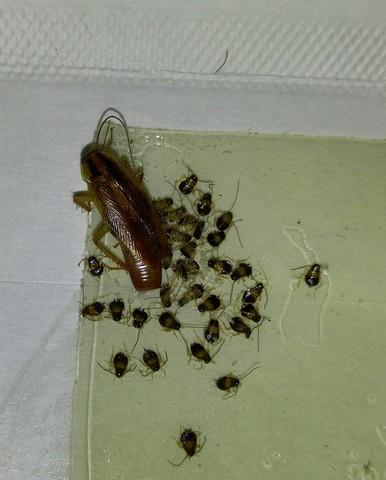Good pest control requires ongoing vigilance in commercial Plainsboro kitchen
Challenge
Commercial kitchens in restaurants and other food service establishments rely on licensed pest control technicians to apply products and set traps for controlling insects and rodents like roaches, flies, and mice. But our real work is what we do before implementing the treatment plan — the inspection and the proactive measures we take to stay on top of problems.
Pest infestations, especially in their early stages, are often subtle. Many insects forage at night for food and otherwise stay out of sight in their hiding places. A good pest control technician is able to pick up signs of insect activity well before spotting live insects crawling about. It is no overstatement to say that the most important part of the job is using our senses — our eyes, ears, and nose (even the most dedicated technician avoids taste!) and our experience to determine if there is a pest problem, and if so, to locate the harborage areas of these vermin.
It does little good to arbitrarily spray product all over a kitchen and hope for the best. Today’s pest control is far removed from the overuse and indiscriminate application of chemicals. Instead, our focus is on effective, targeted applications — applying the least amount of product to get the best results. I am, as all Cowleys technicians, trained in using Integrated Pest Management (IPM) practices with our commercial accounts. IPM is an approach to pest control where multiple control tactics are used in an integrated, comprehensive way to control damaging populations of insect pests. Both the US EPA and the New Jersey DEP consider IPM practices to be the “gold standard” for delivery of pest control services. The IPM approach implements a comprehensive treatment strategy that goes beyond applying pest control products and takes a broad long-term approach. The focus with IPM is taking proactive measures to prevent pest infestations from occurring, and if there is an infestation, to keep the pest populations to a minimum.
Solution
An important part of IPM is monitoring the level of insect activity so we can respond at the first sign of trouble. As much as we would like, we can’t be with each and every one of our accounts 24/7. So, we use techniques that act as our eyes when we aren’t there. For example, we set up sticky traps (glue monitors) that allow us to know what pest problems may be lurking in between service calls.
The pictures here show the activity on two of these monitors placed in a commercial kitchen. One monitor shows heavy cockroach activity where the trap was placed, while the other shows a captured a female roach with the nymphs hatched from the egg case. There are about 30 tiny nymphs, which is fairly typical for the female to carry. The commercial kitchen staff knew there was a roach problem, but no idea of the extent of the problem as indicated by the monitors. This a prime example of why it important to use measures that indicate the status of pest activity and not just guesswork. Restaurants and food serve establishments must have “zero tolerance” when it comes to pest infestations — even one roach is one roach too many!

